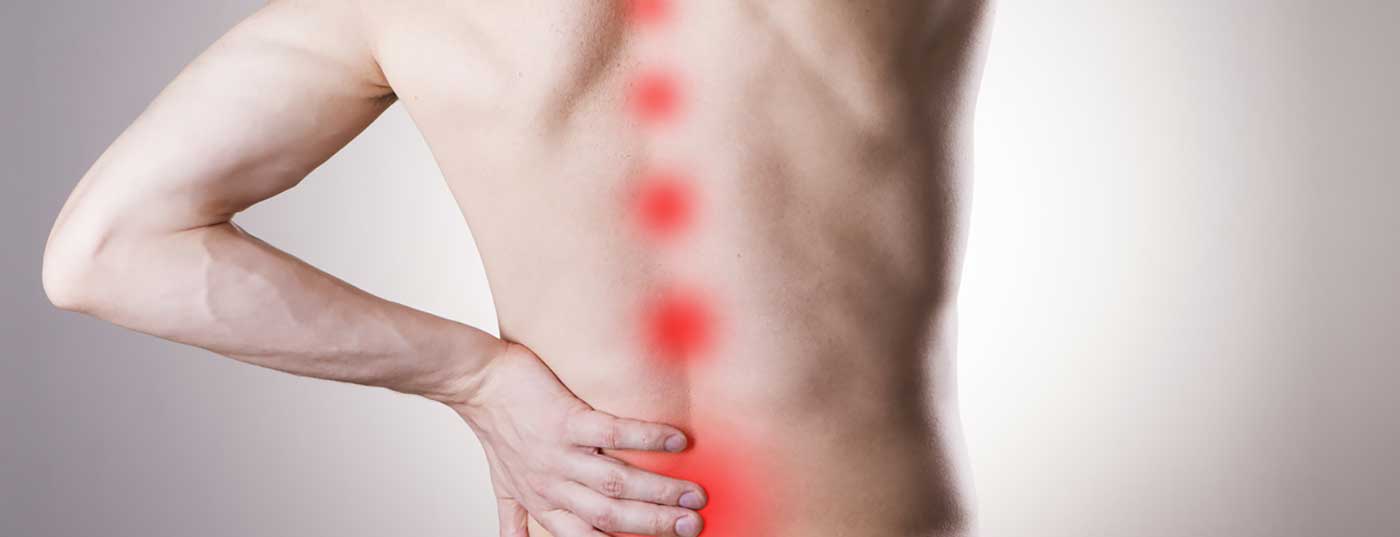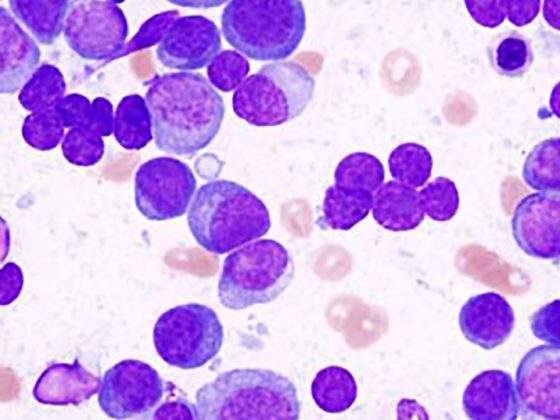Spinal cord stimulation is a neurosurgical, evidence-based, minimally invasive, and safe electrical neuromodulatory method for the treatment of chronic pain. Interdisciplinary patient selection and indication after multimodal therapy trials are crucial. Successful testing, appropriate surgical experience, careful perioperative management, and adequate regular follow-up ensure effective and long-lasting pain relief. Spinal cord stimulation is not a treatment option for acute pain. Study results and own experience based on greater treatment success suggest earlier and more frequent use. Spinal cord stimulation relieves chronic neuropathic, ischemic, vascular, visceral, and mixed pain. Main indications are failed back surgery, complex regional pain syndromes, angina pectoris and peripheral arterial disease.
If medication, interventional or other surgical treatments do not provide adequate relief of chronic pain, neuromodulative procedures are recommended. Epidural spinal cord stimulation, also known as spinal cord stimulation (SCS), is the most widely used technique worldwide and is recognized as the standard method for treating refractory pain syndromes.
Spinal cord stimulation: technique and procedure
SCS is not a curative but a symptomatic form of therapy. However, it can be used to reduce the intensity, frequency, and duration of pain without frequent complications and high risks in appropriately fit patients. In SCS, with sufficient preservation of functional posterior cord fibers, mild electrical currents are used to stimulate afferent nerve pathways of the spinal cord in a manner that results in effective and lasting relief of pain symptoms.
The technical components include different types of epidural electrodes, extensions, test leads with external passive pulse generators, internal permanent neurostimulators and programming devices for the physician and patient.
Before definitive implantation, test stimulation is usually performed under inpatient or home conditions. For this purpose, a spinal epidural electrode is inserted for a few days and an external pulse generator is connected. Provided there are no complications, if there is usually at least a fifty percent reduction in pain, the patient tolerates the procedure well and wishes it, full implantation is performed by subcutaneous internalization of the electrodes and extensions and insertion of a neurostimulator infraclavicularly, abdominally, gluteally or in the flank. In the further course, the programming of the stimulator can be re-evaluated and individually adapted via various parameters and activation of different contacts.
Spinal cord stimulation: when?
Since alternative methods are used first in the early phase of pain syndromes and SCS usually does not have a sufficient effect, it is not indicated in principle for the treatment of acute pain. Typically, SCS is considered in the late phase of pain syndromes after previous conservative treatment has failed or is no longer sufficient, intolerable side effects of previous therapy have occurred, and other interventional or surgical measures are not reasonable alternatives. However, SCS should in no way be considered as a last resort treatment option or an ironclad therapeutic reserve. Study results and our own experience suggest earlier use, but no later than the first two years after symptom onset. This can achieve better long-term results, avoid functional impairment, and reduce side effects of other therapies and patient suffering.
Especially due to the invasive nature and material costs, patient selection should be careful and interdisciplinary and the indication for SCS should be made critically. In addition, a multimodal therapy trial and a successful testing phase should have preceded and possible differential diagnoses requiring a different treatment approach should have been ruled out.
Once implantation has occurred, SCS is a sometimes lifelong continuous therapy. The effect may be diminished, adjusted, or suspended and is completely reversible when the neurostimulator is turned off. At the patient’s request, the implants can be explanted again if they are not effective enough. Combination with other supplementary treatment methods or future interventions and operations is possible in principle. Some patients still require analgesic medication even with SCS, but this can usually be reduced.
In principle, many different chronic pain syndromes are potential indications for SCS. In addition to the cause, character and duration of the pain, the localization and size of the affected area of the body are important. Neuropathic, radicular, and mixed pain, as well as pain associated with ischemic, vascular, and visceral disease, are generally appropriate.
Contraindications
There are a number of absolute and relative contraindications to SCS:
- Anatomical: relevant instabilities and anomalies of the spine or spinal cord lesions that interfere with electrode insertion or stimulation.
- Somatic: e .g., limiting malignancies, infections, and inadequately treatable pathologic coagulation and immune status.
- Psychological: relevant psychological and psychiatric comorbidities, somatization, medication, drug, or alcohol abuse, addictive behaviors, secondary illness gain, lack of capacity to consent, compliance, and understanding in the management of SCS.
- Social: insufficient private background and lack of support.
- Technical: for example, implants already placed or planned elsewhere, such as pacemakers and defibrillators, MRI examinations, radiation, ultrasound, radiofrequency, lithotripsy, diathermy, electrocautery, and hyperbaric pressures that are expected to interact with SCS.
With regard to product-specific contraindications and compatibility with other implants, instruments and diagnostics, the special features of the respective makes and the recommendations of the individual manufacturers must be taken into account.
Patient age
SCS is not usually used for pain management in patients under 18 years of age, although the applied current and energy of the electromagnetic field are very low. There is little clinical experience in this age group and potential side effects have not been adequately clarified. Furthermore, it is difficult to find meaningful indications. In contrast, for patients over 18 years of age, SCS can be used into old age if indicated and taking into account possible contraindications.
Pregnancy
The effects of SCS on the course of pregnancy and lactation cannot be predicted with certainty. Due to the variable and dynamic anatomic conditions, both reimplantation and previously inserted SCS are associated with an increased complication rate, especially in the area of the expanding abdominal wall. Therefore, women of childbearing age should think about a possible pregnancy and consider a pregnancy test. Patients should be informed of the potential risks and limited experience with SCS. In the case of implantation, a gluteal location of the neurostimulator is preferable to an abdominal location if pregnancy is planned in the future. If pregnancy is known, retreatment with an SCS is usually not given, and it is recommended that an existing SCS be discontinued whenever possible. In all other respects, the continuation of SCS must be decided on an individual basis, taking into account possible benefits and risks of SCS, as well as alternative treatment options, and interdisciplinary treatment must be provided until birth.
Spinal cord stimulation: which patients?
Although patients with neuropathic, ischemic, and vascular pain benefit best from SCS, mixed, visceral, nociceptive, and malignancy-associated pain syndromes can also be successfully treated with SCS. In many cases, it is also not possible to clearly differentiate between neuropathic and nociceptive pain; test stimulation is then useful as an individual healing attempt.
Main indications
Established indications for SCS include chronic back and leg pain in the setting of failed-back-surgery syndrome (FBSS) and radiculopathies of various causes, complex regional pain syndrome (CRPS), refractory angina pectoris (AP), and peripheral arterial disease (PAVD). In addition, there are as yet unestablished indications such as painful peripheral neuropathies and phantom and residual limb pain.
Failed-back-surgery syndrome (FBSS)
FBSS is the most common condition treated with SCS. Moreover, there is the most extensive body of data on this subject demonstrating clinical efficacy of SCS and its superiority over conventional conservative and surgical therapies in terms of pain relief, medication reduction, improvement in quality of life, and patient safety. Also, better cost recovery was demonstrated with SCS compared with conservative treatment or reoperation. Lower extremity complaints are usually more amenable to SCS than axial back pain.
Complex regional pain syndrome (CRPS)
Another common indication is CRPS (type I and II). SCS appears to modulate not only neuropathic pain but also autonomically mediated pain. Numerous studies have demonstrated the efficacy of SCS in CRPS and have shown it to be superior to physical therapy alone in terms of pain reduction, increase in quality of life, and cost effectiveness.
Refractory angina pectoris (AP)
SCS is also effective in the treatment of cardiovascular disease and can favorably affect pain as well as blood flow and healing processes. Patients with coronary artery disease and refractory AP without the option of percutaneous intervention or bypass grafting are potential candidates.
Under SCS, the number of angina attacks and medication requirements are reduced. In addition, exercise capacity and quality of life are higher compared with conventional drug treatment or myocardial laser revascularization, and SCS incurs lower treatment costs.
Peripheral arterial occlusive disease (PAVK)
In patients with critical PAVK and ischemic limb pain, in whom conservative therapy is insufficient and surgery is not an alternative, SCS results in vasodilation and improvement of regional blood flow and tissue oxygenation. Studies have shown that SCS is superior to drug therapy in terms of ischemic and analgesic effects, frequency of amputations, healing of skin ulcerations, improvement of quality of life, and cost reduction.
Other indications
SCS has now been successfully used for many other pain syndromes. In terms of an individualized curative trial, SCS is warranted in selected patients. Both data from the literature and our own experience show promising results depending on the clinical picture.
Extensive data with predominantly good results can be found on peripheral neuropathies of diabetic, postherpetic, posttraumatic, and toxic origin. There are also studies on visceral pain syndromes of various gastrointestinal and urogenital diseases that report good efficacy of SCS. For some of these conditions, a positive influence on the underlying disease itself and its further symptoms could be shown. In addition, some publications can be found on the successful treatment of other cardiovascular diseases associated with chronic pain. Other possible applications include postoperative pain syndromes after thoracotomies, herniotomies and amputations as well as in failed-neck-surgery syndrome, post-traumatic pain after plexus avulsions and spinal cord injuries, painful degenerative diseases such as spinal stenosis, neck, back and shoulder pain or neurological diseases including multiple sclerosis, movement disorders as well as head and facial pain of various causes.
Only in rare cases is SCS indicated for malignancy-associated and oncologic pain; for these indications, SCS is usually inferior to other therapeutic options such as pharmacologic neuromodulation.
Conclusion
Although SCS cannot improve all pain syndromes equally, it is an indispensable and integral part of today’s pain management inventory and one of the most advanced, tolerable, and variable therapeutic options for treating chronic pain. Late admission of appropriate patients to SCS may reduce the chances of success and should be avoided.
Many studies and our own results show that the indication for SCS is given too rarely and that SCS could be used sensibly far more often.
Constant technical, methodological and conceptual advancements, new stimulation algorithms, increasing scientific evidence, the combination of SCS with other non neuromodulatory and neuromodulatory procedures and the definition of new stimulation targets allow for further optimization of SCS and will further expand the spectrum of indications.
Literature list at the publisher
InFo NEUROLOGY & PSYCHIATRY 2016; 14(3): 20-23.











